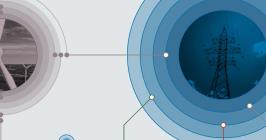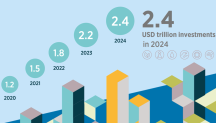

Grid Codes for Renewable Powered Systems
Newsletter
This report contains the latest developments and good practices to develop grid connection codes for power systems with high shares of variable renewable energy – solar photovoltaic and wind. The analysis is an update of the 2016 IRENA report Scaling up variable renewable power: The role of grid codes.
There is an urgent need to adopt clean energy solutions to cope with growing demand for energy and replace existing polluting generators. The inclusion of variable renewable energy introduces challenges to system operation. As renewable energy is variable, uncertain, location constrained and inverter-based, replacing conventional synchronous generation technologies. Furthermore, the power system is becoming more decentralised, digitalised and end-use sectors more electrified. These trends are driving the growth of the power system in a new and different direction. All of this comes at a cost to the system operation, which has to ensure that the system is stable at all times.
Grid codes play a critical role in building trust between the system operators and stakeholders. They remain one of the central tools to ensure the security of supply of a power system at any time. Grid connection codes define technical requirements, regulations, and behaviour for all active participants in the power system, including power generators, adjustable loads, storage, and other units. Grid codes are evolving, to enable innovative technologies to be connected to the network safely, without compromising the reliability of supply.
This report elaborates on the latest developments and experiences related to technical requirements for connecting variable renewable energy generators and enabling technologies such as storage, electric vehicles or flexible demand.




